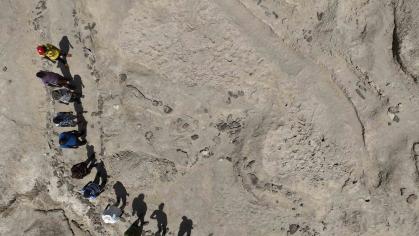A Fossil First: Scientists Find 1.5-Million-Year-Old Footprints of Two Different Species of Human Ancestors at Same Spot

November 27, 2024
Discovery by an international team, including Rutgers researcher Craig Feibel, proves the theory that some ancient hominins were neighbors
More than a million years ago, on a hot savannah teeming with wildlife near the shore of what would someday become Lake Turkana in Kenya, two completely different species of hominins may have passed each other as they scavenged for food.
Scientists know this because they have examined 1.5-million-year-old fossils they unearthed and have concluded they represent the first example of two sets of hominin footprints made about the same time on an ancient lake shore. The discovery will provide more insight into human evolution and how species cooperated and competed with one another, the scientists said.